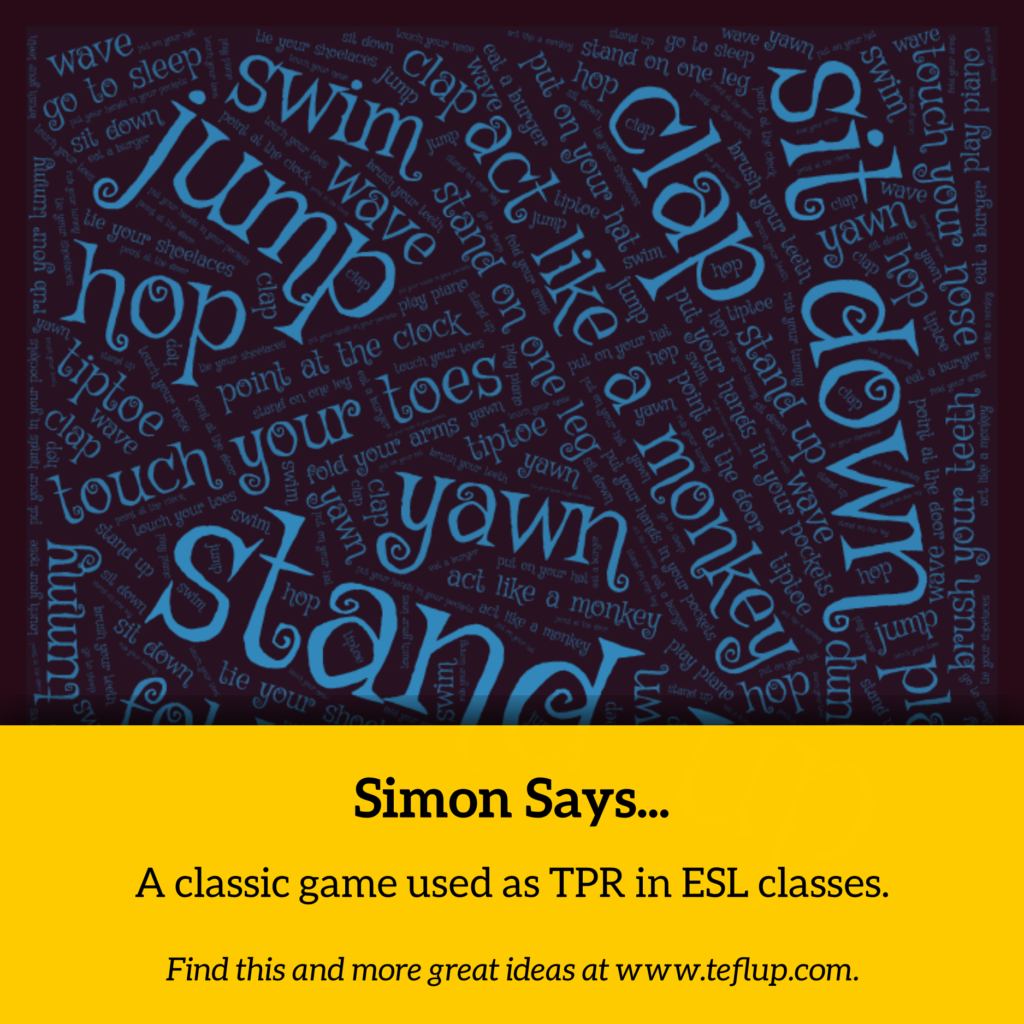For more ESL games and activities, click here.
Simon Says
This classic children’s game practises instructions by responding with movement, therefore benefiting kinaesthetic learners through TPR (total physical response).
Simon says or a similar game exists in many other languages, with many of these using the name “Simon says”. In other cases, a different name is used (e.g. Jacob in Turkish, Jean/Jacques in French), or a position such as teacher, leader, king or a military rank such as captain. Many students are therefore likely to be able to understand this game due to their familiarity with their own language version.
As well as being a great one-off time filler or stirrer, Simon Says can be used as part of a regular opening or closing routine with young learners. By regularly planning to play this game, the same instructions can be recycled every lesson. Instructions that have been learnt can be temporarily dropped for several lessons and then make a return to check students have retained the instruction.
- Focus: Young Learners, Lexis, Listening
- Level: Beginner+
- Age: VYL/Primary
- Target Language: Instructions, leisure activities, animals, clothes, etc.
- Time: 5 minutes
- Preparation: None
Procedure:
The best way to introduce this game is simply to start playing it. Say “Simon says” and follow with an instruction. Until students get the hang off the game, it is a good idea to do the instruction as well. You can also replace Simon with your own name. After a few instructions, say an instruction but don’t use “Simon says.” Students should not do this instruction.
You could decide that students are out if they do the instruction that they weren’t meant to. However, this means that some students are left out and not practising, so it is best to simply allow students to continue.
Example:
T: Simon says comb you hair.
Ss: (Mime combing hair)
T: Sit down.
Ss: (Remain standing apart from one who sits)
T: (To sitting student) Simon didn’t say.
Variations:
1: If students are able to remember the instructions they can take over and call out instructions.
2: Instead of Simon says, you can use the commands “do this” and “do that”. A “do this” instruction should be obeyed, while “do that” instructions should not.
3: After students have performed some actions many times you should not need to perform the action for them. Try to delay showing the action in subsequent games.
Online: Simon Says is quite possible to play online. One potential problem however is that you do not have a clear idea of the space the student has around them. You may find it a good idea to tell the student to stand up, take a step back from their computer, put their arms out and slowly turn around to make sure they have space.
Example Language:
Classroom instructions – show me your pen/close your book/sit down/stand up
Animals – act like a monkey/elephant/crocodile/tiger
Clothes – put on/take off your hat/glasses/shoes/jacket/jumper
Leisure activities – play the piano, play football, go swimming
Food – eat an ice cream, eat pizza, eat chips, drink some milk
Body parts – clap your hands, stand on one leg, fold your arms, touch your ear
Classroom objects – point to the window/door/clock
Daily routines – brush your teeth, go to bed, wake up





